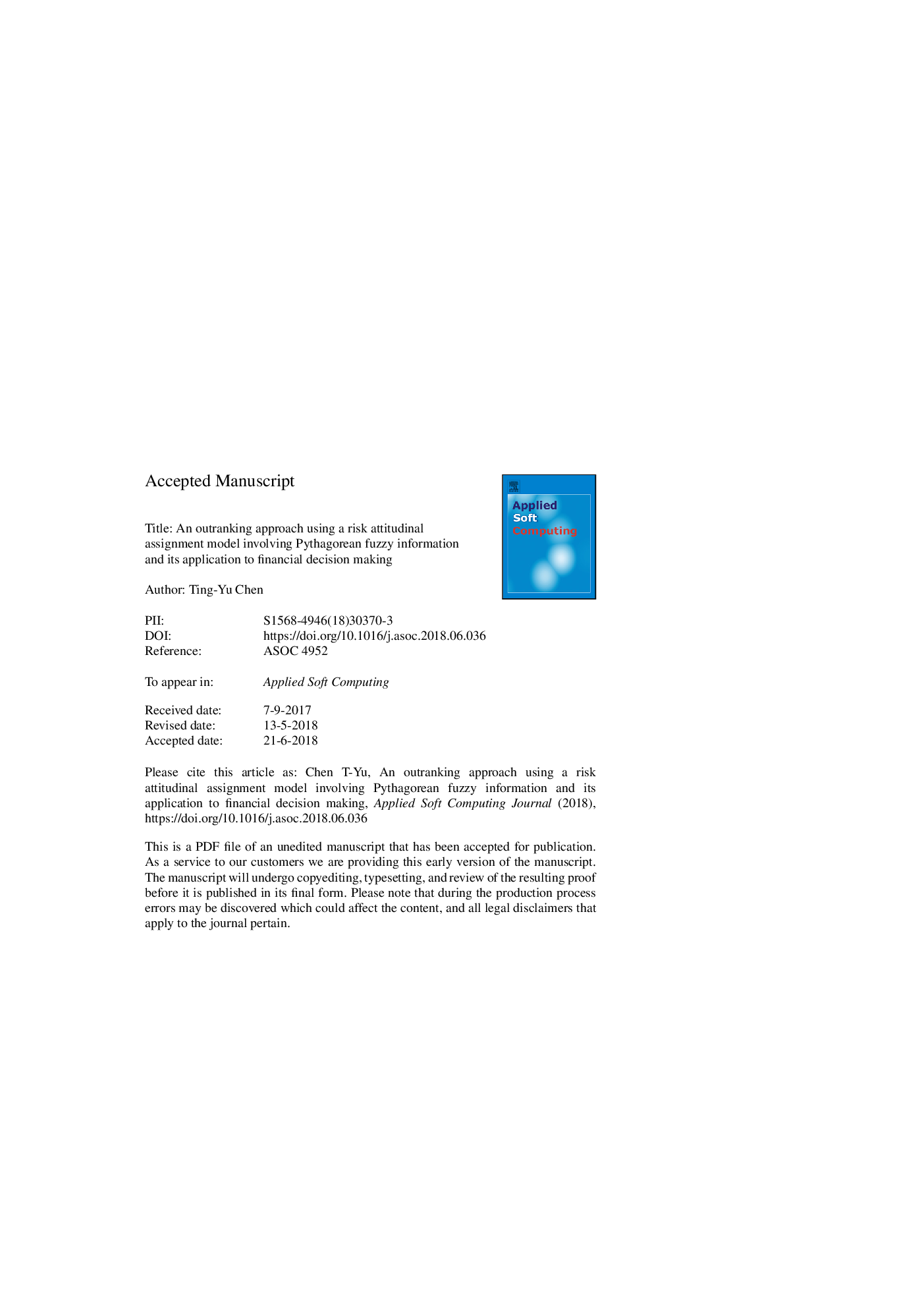| Article ID | Journal | Published Year | Pages | File Type |
|---|---|---|---|---|
| 6903285 | Applied Soft Computing | 2018 | 54 Pages |
Abstract
The aim of this paper is to develop a novel outranking method using a risk attitudinal assignment model under complex uncertainty based on Pythagorean fuzzy (PF) sets and interval-valued Pythagorean fuzzy (IVPF) sets. Additionally, this paper applies the proposed methodology to address financial decision-making problems to investigate its applicability and effectiveness in the real world. These developed methods and techniques can provide a new viewpoint for capturing the amount of information conveyed by PF and IVPF values and can fully take into account the decision maker's attitude towards risk-taking in the face of high uncertainty. Considering the diverse attitudes toward risk neutrality, risk seeking, and risk aversion, this paper introduces novel measures of risk attitude-based score functions within the PF/IVPF environments and investigates their desirable and useful properties. These properties provide a means of establishing linear orders and admissible orders in the PF/IVPF contexts. This means that the proposed measures can overcome some drawbacks and ambiguities of the previous techniques through score and accuracy functions and can address incomparable PF/IVPF information more effectively. As an application of the risk attitude-based score functions, this paper develops novel risk attitudinal assignment models to establish a useful outranking approach for solving multiple criteria decision-making problems. Two algorithms for PF and IVPF settings are developed based on the concepts of a precedence frequency matrix and a precedence contribution matrix for conducting multiple criteria evaluation and the ranking of alternatives. A financing decision on aggressive/conservative policies of working capital management is presented to demonstrate the applicability of the proposed outranking approach in real situations. Moreover, a comparison to the technique of risk attitudinal ranking methods is investigated to validate the advantages of the proposed methodology. Furthermore, a comparative analysis with a newly developed outranking method, the IVPF-ELECTRE (for the elimination and choice translating reality), is conducted via an application to the investment problem of software development projects. Compared with these benchmark approaches, the proposed methods can produce a more reasonable and persuasive result for ranking the order relationships of alternatives in the highly uncertain context. The practical studies and comparative discussions demonstrate an excellent performance of the developed methodology that is effective and flexible enough to accommodate more-complex decision-making environments.
Related Topics
Physical Sciences and Engineering
Computer Science
Computer Science Applications
Authors
Ting-Yu Chen,
